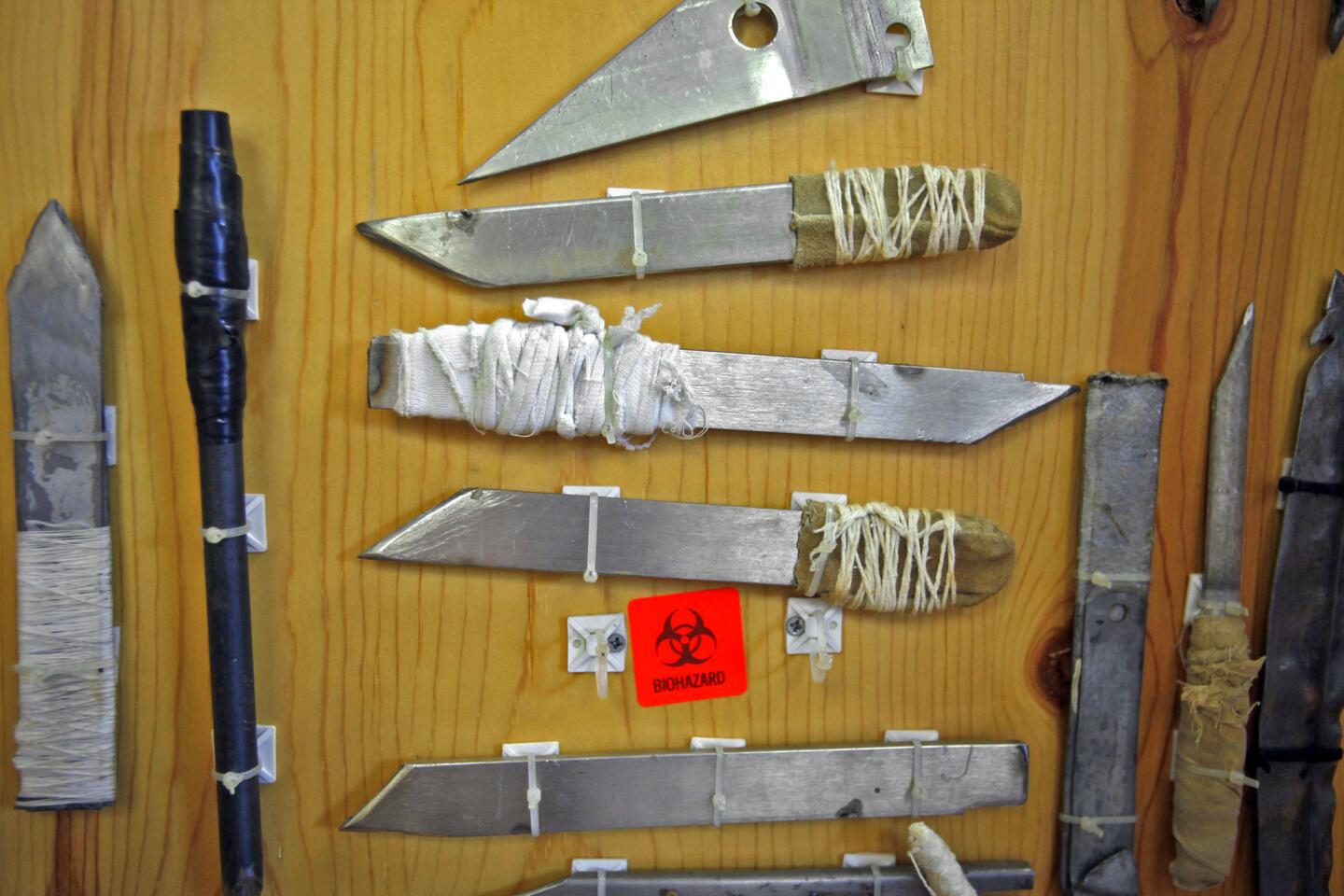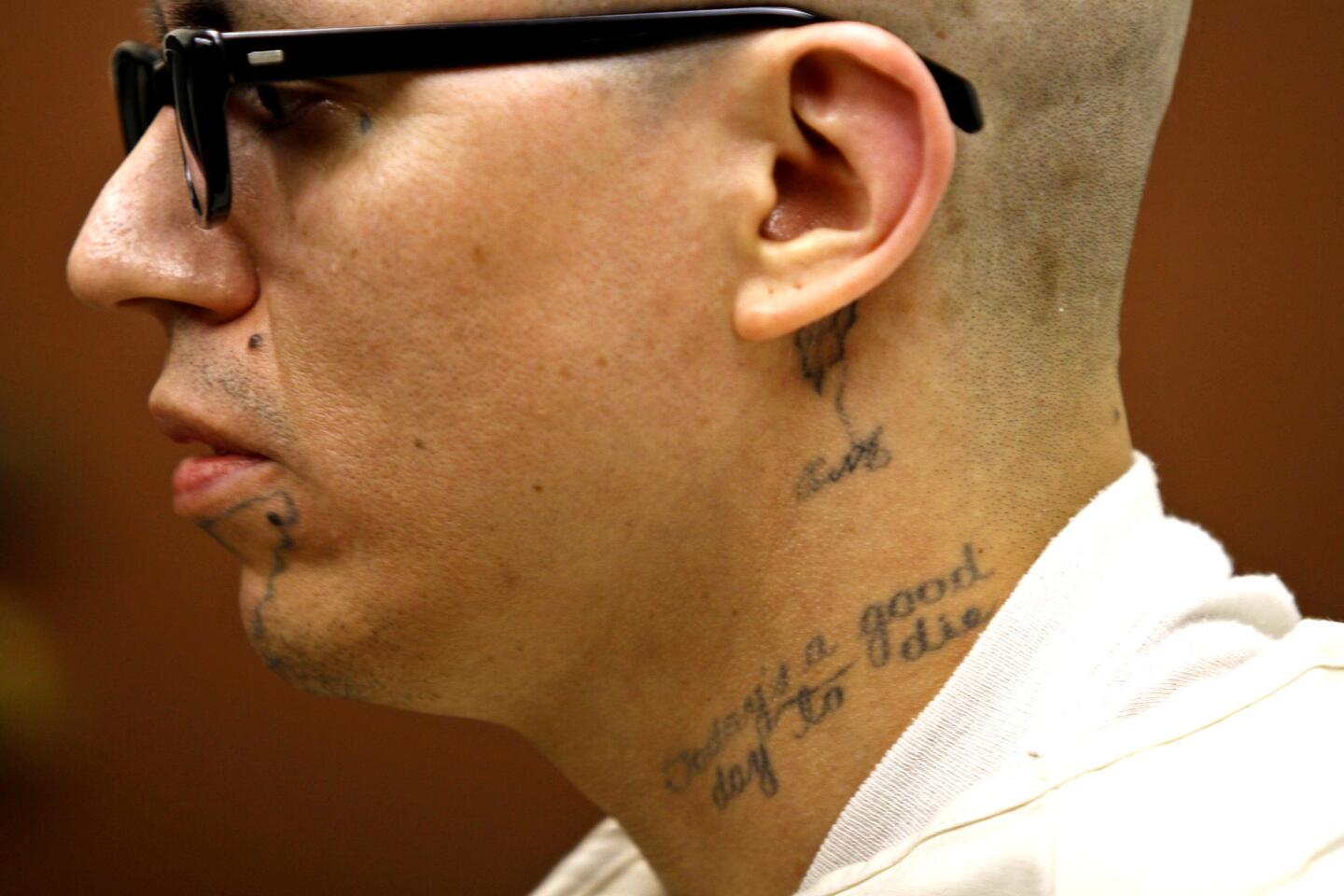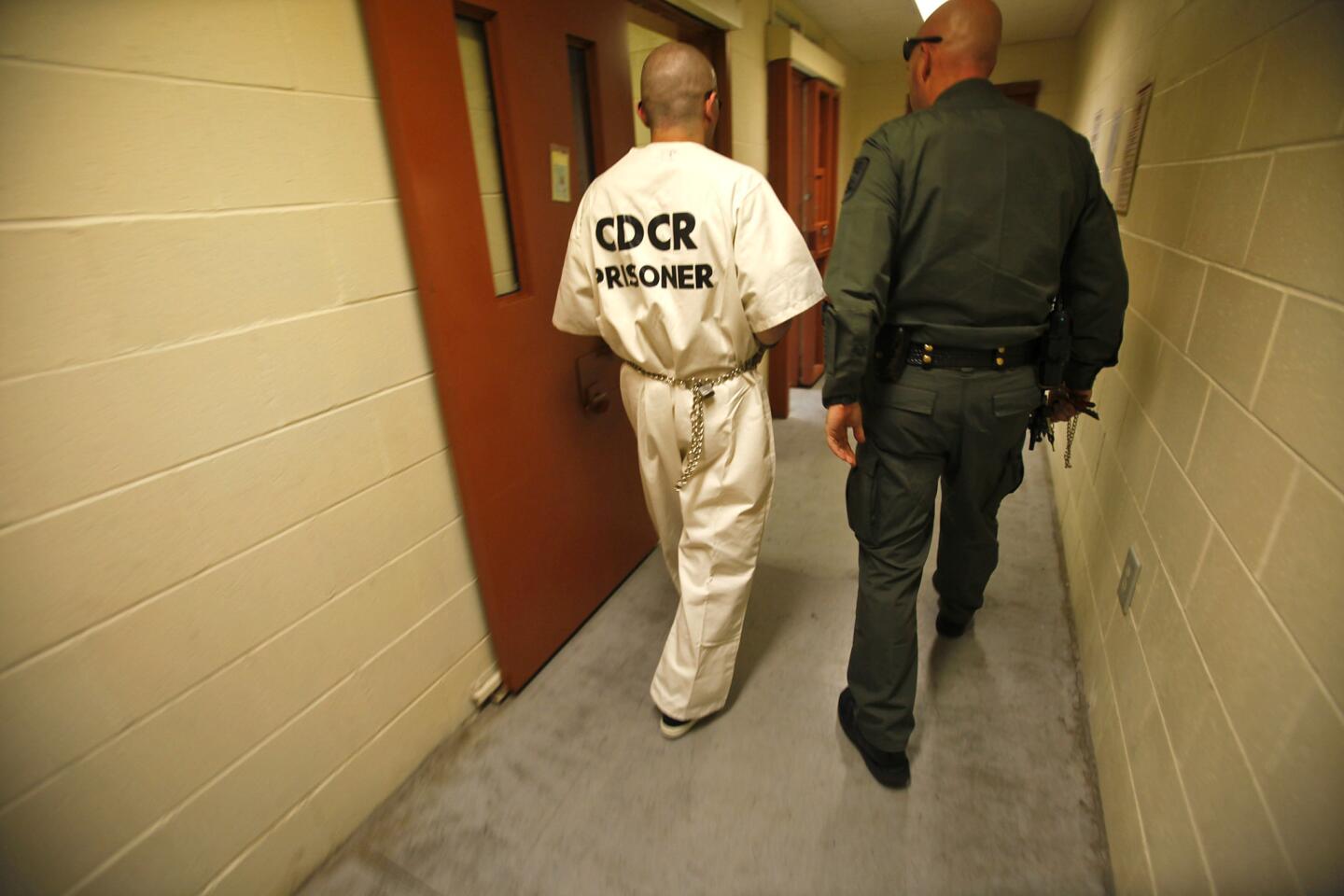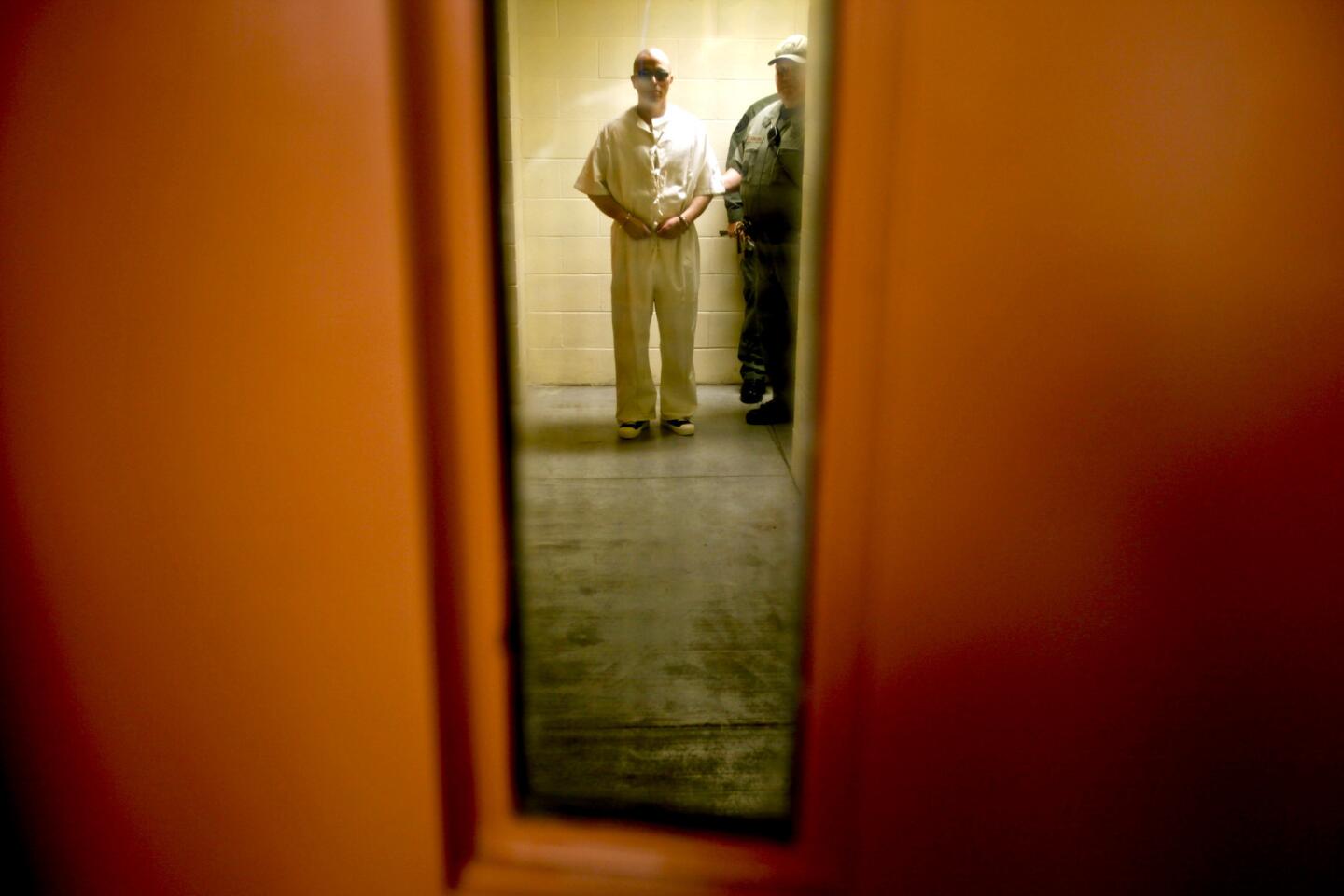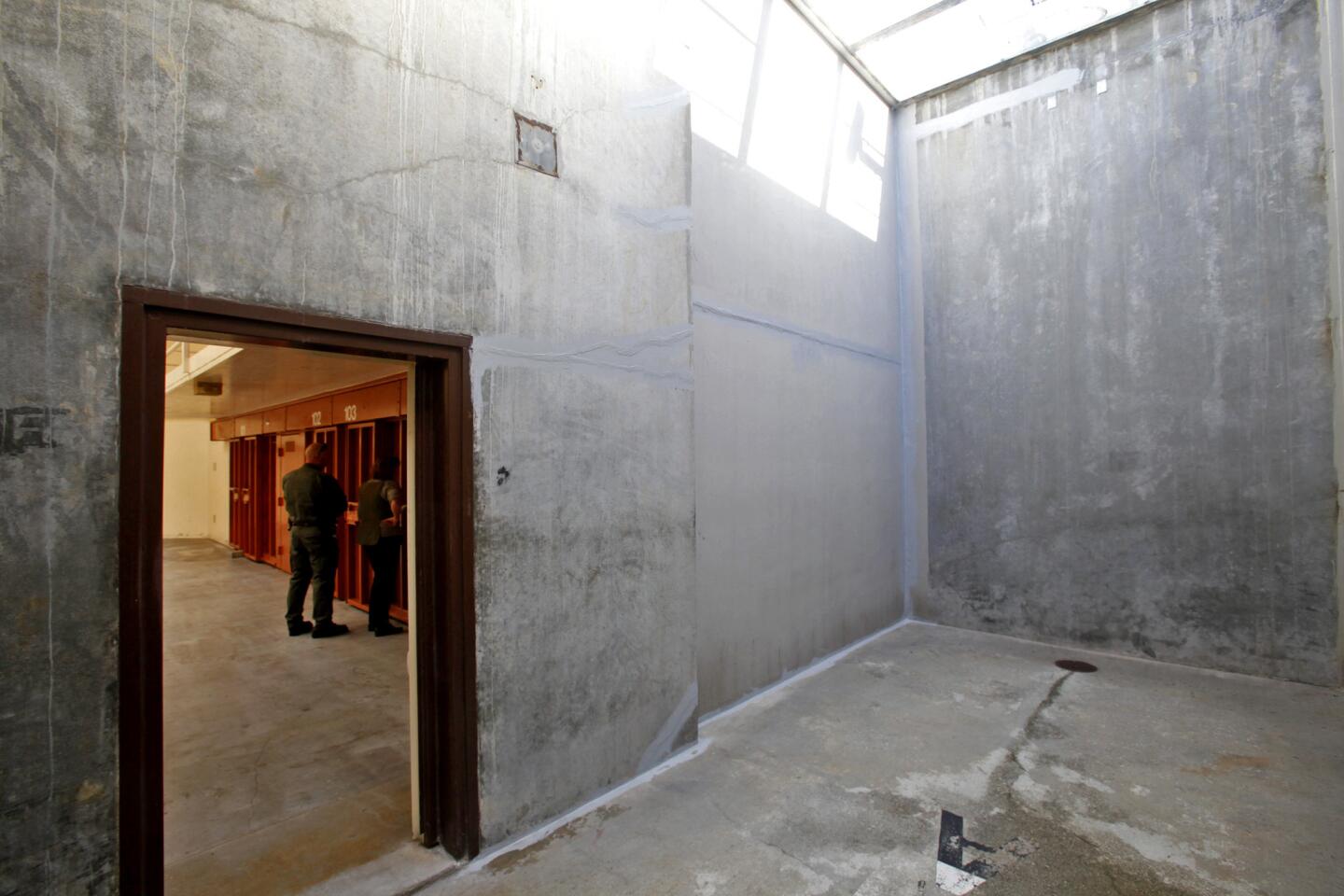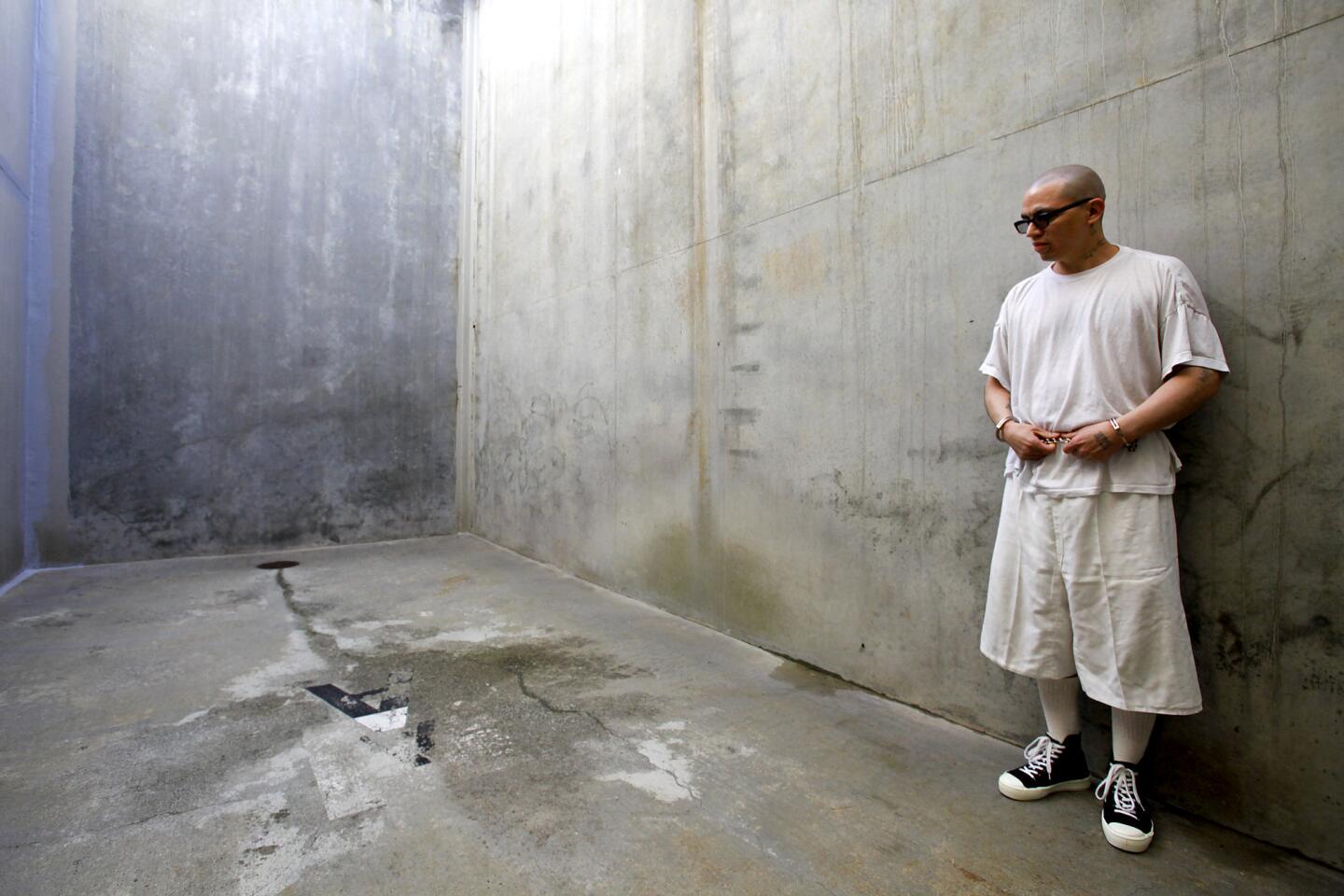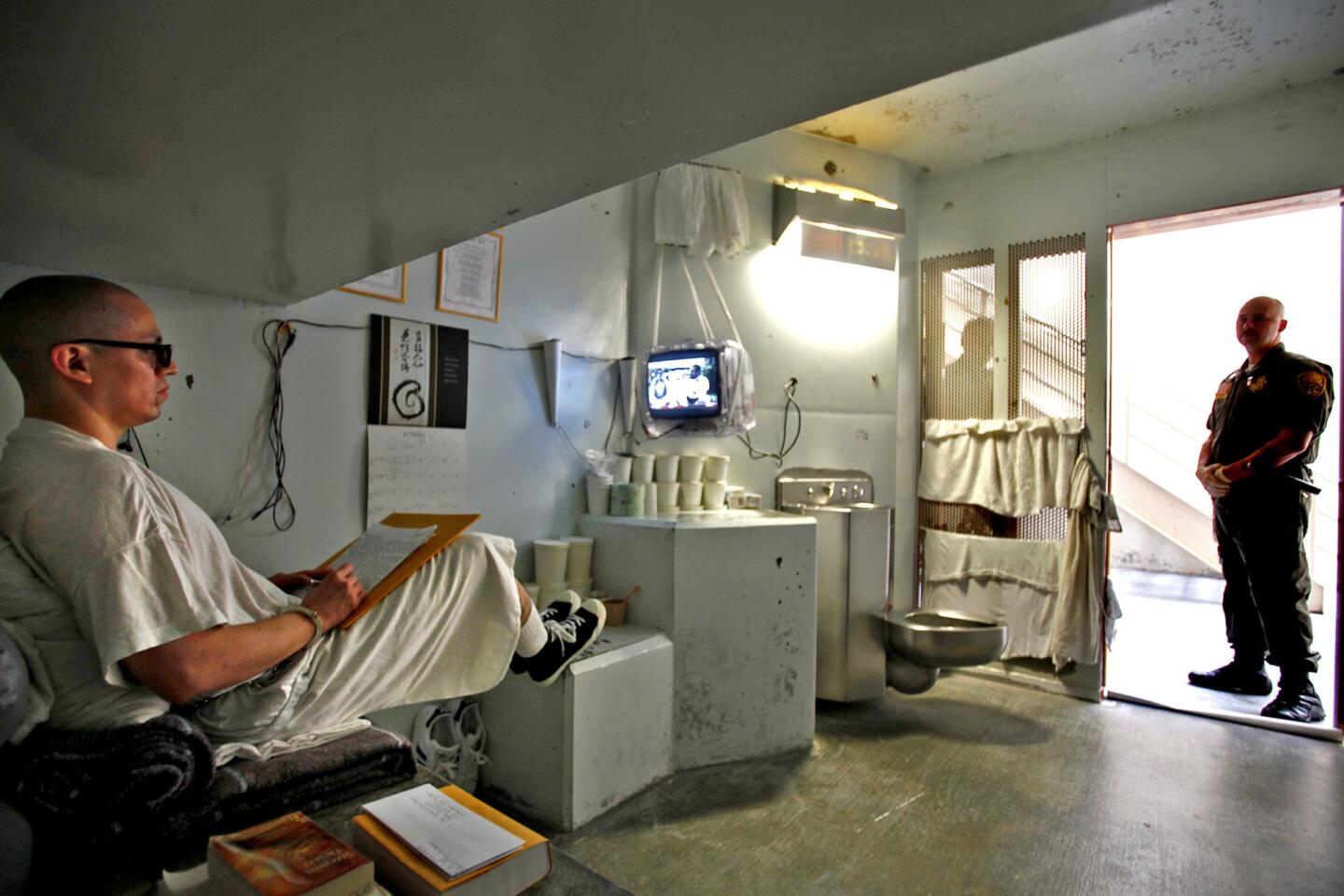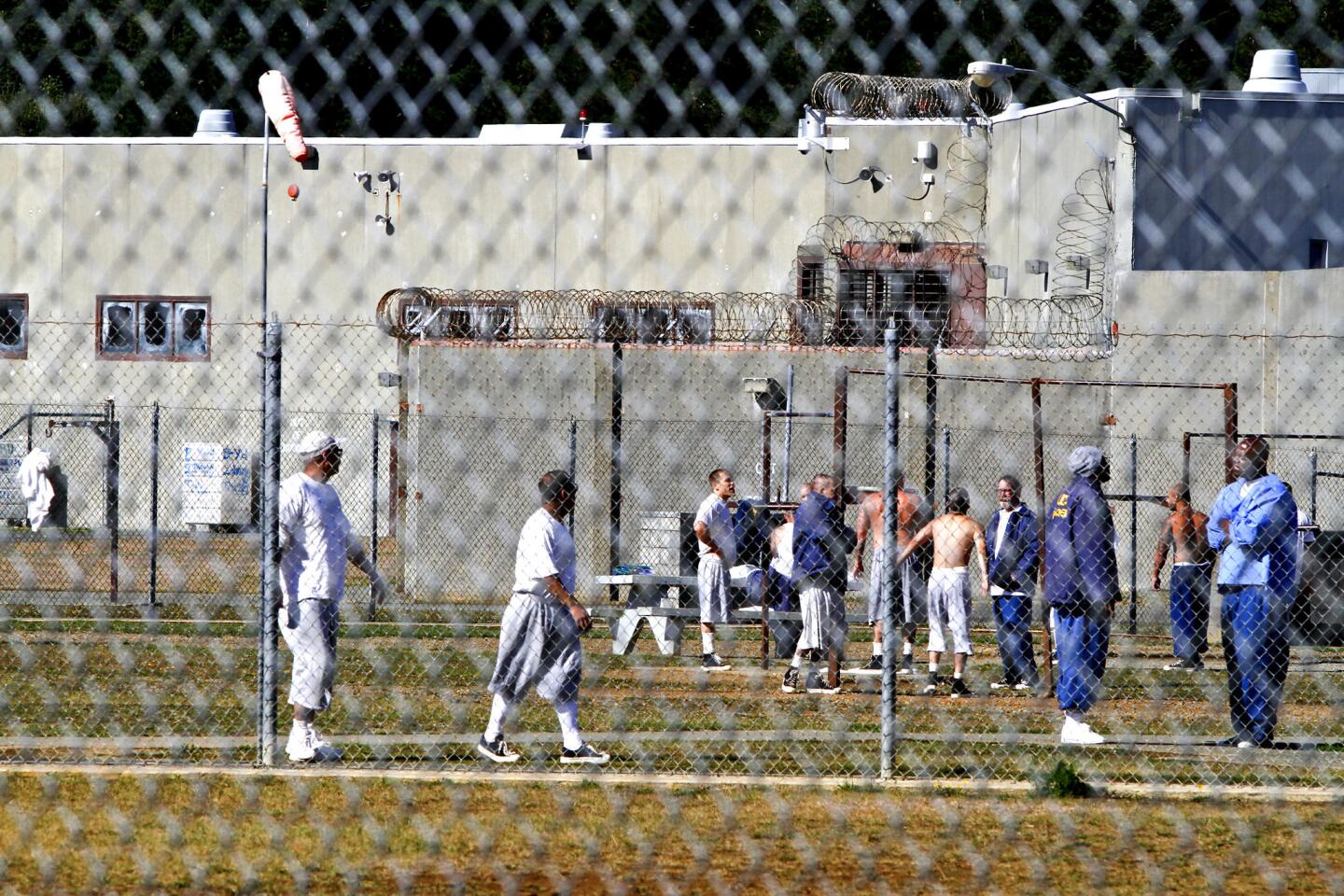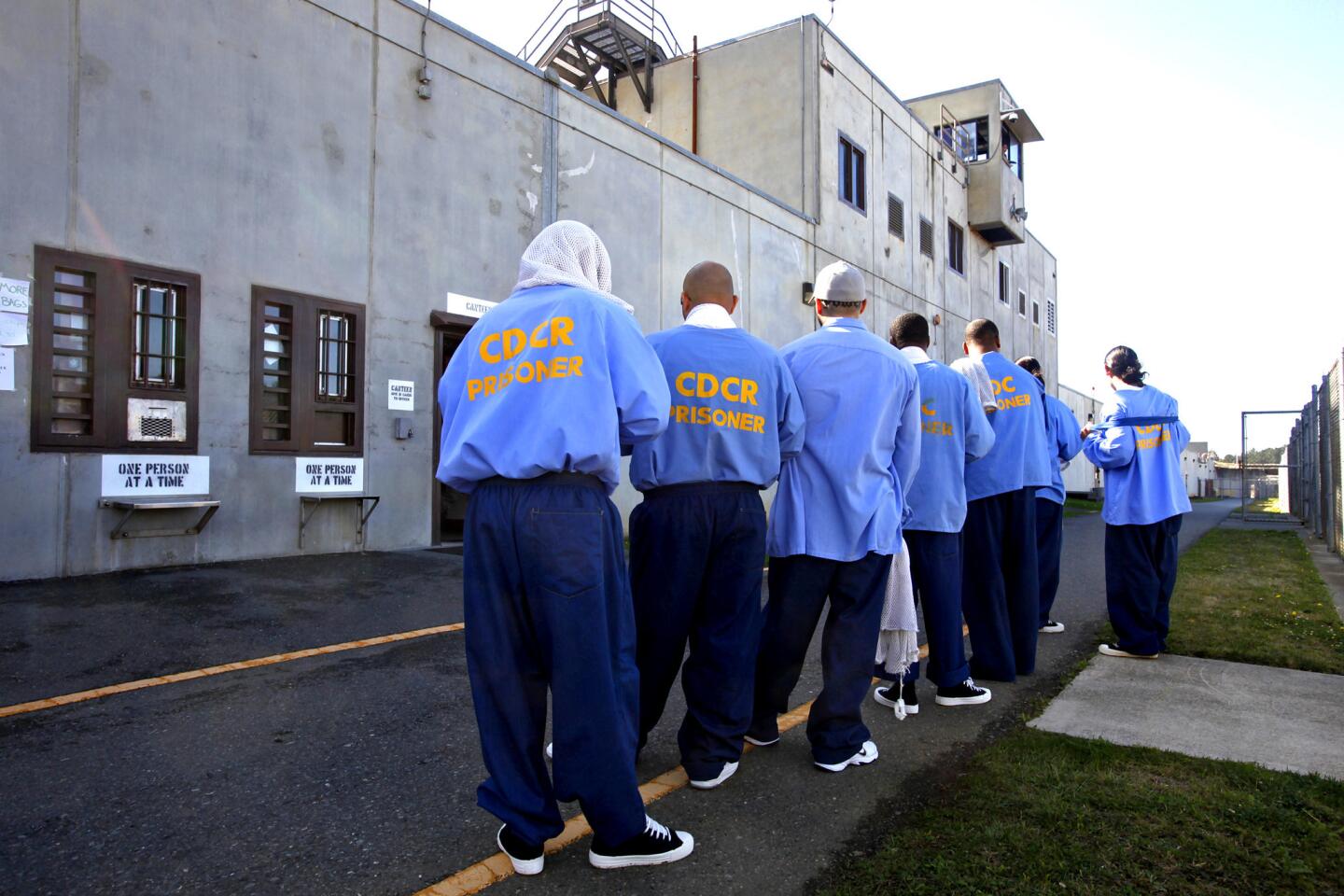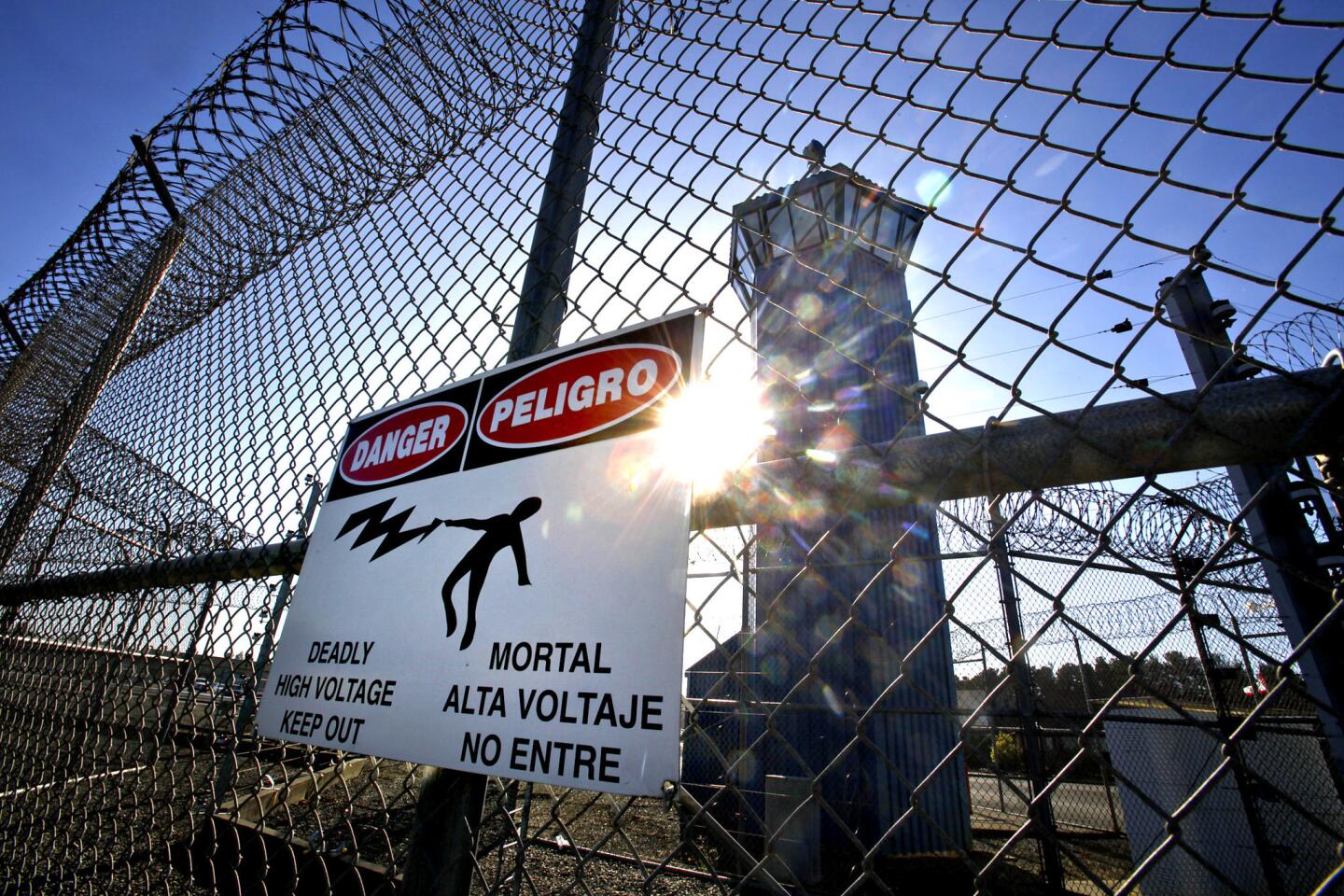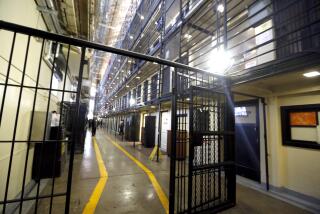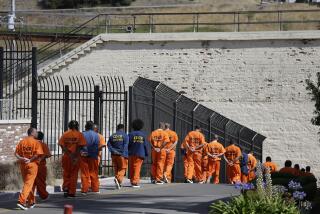L.A. Now Live: Latest on California prison hunger strike
Convicted killer Todd Ashker and three other inmates — representing the Mexican Mafia, Nuestra Familia and the Black Guerrilla Family — called for a mass hunger strike July 8, largely to protest indefinite incarceration in solitary confinement.
More than 30,000 prisoners answered.
Join us at 9 a.m. when we talk with Times reporter Paige St. John about the strike.
PHOTOS: Inside Pelican Bay State Prison
Though segregated from others, the leaders, who dub themselves the Short Corridor Collective, have kept the protest going, with more than 600 inmates still refusing food.
In the 1980s, the Department of Corrections started building high-security prisons with isolation blocks called “security housing units” — known by inmates as the SHU, pronounced “shoe.’’ California now has four SHU prisons, holding more than 4,500 men whom the state calls “the worst of the worst.”
The toughest facility was built at Pelican Bay State Prison near the Oregon border.
The Pelican Bay SHU is divided into pods of eight cells stacked four-wide and two-high, facing a blank wall. There are no bars. Each steel door is perforated to let in air and light.
Once a day, that door slides open. The prisoner can enter an empty concrete “dog run” for 90 minutes to exercise.
Kept indoors for years, men in the SHU take on a ghostly pallor, as if dusted with flour. They get less canteen food than do other inmates, less clothing, and are allowed limited belongings, fewer visits and no phone calls. Every privilege, from mail to medical care, is rationed.
For those accused of gang involvement, the SHU is an indefinite sentence. More than 400 have been inside Pelican Bay’s SHU for more than a decade; 78 have been held there for more than two decades.
They have common complaints of anger, anxiety, depression, insomnia, inability to concentrate and loss of a sense of time, according to report by a psychiatrist retained by civil rights lawyers challenging the use of long-term solitary confinement.
The top prison gang leaders of California are held together in one wing of Pelican Bay, called the Short Corridor, on the theory that it is easier to control them in one place, corrections officials said.
As a result, the leaders of the strike have shared adjacent cells.
More to Read
Start your day right
Sign up for Essential California for news, features and recommendations from the L.A. Times and beyond in your inbox six days a week.
You may occasionally receive promotional content from the Los Angeles Times.

